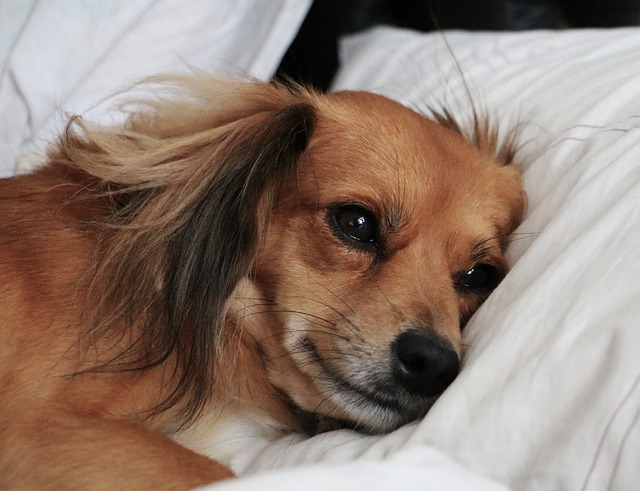Air pollution isn’t just a concern for humans; it also poses significant health risks to our canine companions.
Dogs are particularly vulnerable due to their heightened respiratory rates and close-to-the-ground sniffing habits, which increase their exposure to airborne toxins.
Understanding how to protect your dog from air pollution is crucial for their well-being.
Understanding the Risks
Air pollution contains harmful particles like PM2.5, ozone, and volatile organic compounds (VOCs) that can irritate your dog’s respiratory system.
These pollutants can lead to coughing, wheezing, and even long-term health issues such as bronchitis or heart disease. Dogs with pre-existing conditions like asthma or those living in urban areas are at an even higher risk.
Click here to learn more about how to protect your dog from sunburn.
Limiting Outdoor Exposure
One of the most effective ways to protect your dog from air pollution is by reducing their time outdoors during high pollution periods.
Avoid walks during peak traffic hours and consider early morning or late evening outings when air quality is typically better.
If your dog enjoys outdoor activities, switch to indoor play to keep them active without exposing them to harmful air.
Click here to learn more about how to check your dog’s temperature.
Creating a Clean Indoor Environment
Even indoors, your dog can be affected by poor air quality. Keep windows and doors closed to prevent outdoor pollutants from entering.
Use air purifiers equipped with HEPA filters to remove particles from the air. Regularly clean your home, including vacuuming with HEPA-filtered vacuums and using pet-safe cleaning products to minimize indoor pollutants.
Click here to learn more about why dogs trust humans.
Bathing and Grooming
Pollutants can cling to your dog’s coat and paws. Regular baths using hypoallergenic or prebiotic shampoos can help remove these toxins and soothe their skin. Applying paw balm before and after walks can protect their paws from pollutants and prevent irritation.
Click here to learn more about how to treat sunburn on a dog’s nose.
Keeping Your Dog Hydrated
Proper hydration supports your dog’s overall health and helps flush out toxins. Ensure they have access to fresh water at all times, especially during periods of high pollution. Adding a splash of low-sodium broth to their water can encourage them to drink more.
Click here to learn more about Havanese puppies for sale and adoption dogs.
Monitoring Air Quality
Stay informed about the air quality in your area using apps or websites that provide real-time data. When pollution levels are high, take extra precautions to limit your dog’s exposure. Some areas may even issue advisories for pets during poor air quality days.
Click here to learn more about how to treat bad breath in dogs.
Providing Enrichment Activities
Keeping your dog mentally stimulated indoors can prevent boredom and stress. Use puzzle toys, treat-dispensing games, or training sessions to keep them engaged. This not only helps distract them from the lack of outdoor activity but also supports their mental health.
Click here to learn more about how to choose the right dog obedience trainer.
Consulting Your Veterinarian
If your dog shows signs of respiratory distress or if you live in an area with consistently poor air quality, consult your veterinarian.
They can provide guidance tailored to your dog’s health needs and may recommend additional protective measures or treatments.
Click here to learn more about the ultimate guide to dog obedience training at home.
A Word from GetMe Treated
How to protect your dog from air pollution requires proactive measures and awareness. By limiting exposure, maintaining a clean indoor environment, and monitoring your dog’s health, you can help ensure they lead a healthy and happy life despite environmental challenges.
Click here to learn more about healthy, natural dog treats.
FAQs About How To Protect Your Dog from Air Pollution
How can I tell if my dog is affected by air pollution?
Signs include coughing, wheezing, nasal discharge, lethargy, and eye irritation. If you notice these symptoms, consult your veterinarian.
Are certain breeds more susceptible to air pollution?
Yes, brachycephalic breeds like Bulldogs and Pugs are more prone to respiratory issues and may be more affected by poor air quality.
Can air purifiers help my dog?
Yes, air purifiers with HEPA filters can reduce airborne pollutants, creating a safer indoor environment for your dog.
Is it safe to walk my dog during high-pollution days?
It’s best to avoid walking during high pollution periods. If you must go out, keep walks short and avoid high-traffic areas.
Should I bathe my dog more frequently during poor air quality?
Regular baths can help remove pollutants from your dog’s coat and skin. Use gentle, hypoallergenic shampoos and avoid over-bathing, which can dry out their skin.
Can diet improve my dog’s resistance to air pollution?
A balanced diet rich in antioxidants can support your dog’s immune system. Consult your veterinarian for dietary recommendations tailored to your dog’s needs.

